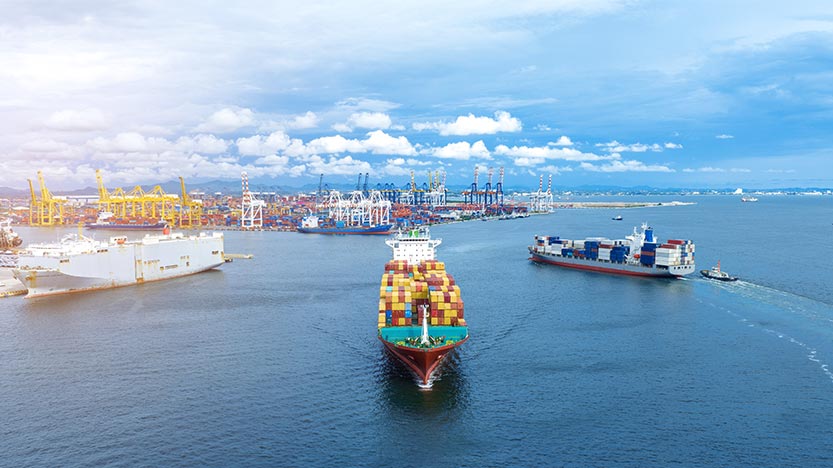In today’s interconnected global economy, international shipping is crucial in facilitating trade and commerce. As businesses and individuals look to ship goods from the United States to Australia, understanding the factors influencing shipping costs becomes essential.
The shipping cost to Australia can vary significantly depending on various factors, including distance, shipping method, packaging, customs duties, and additional services. By examining these factors in detail, we can gain insights into the key determinants that affect the overall cost of shipping to Australia from the United States.
Distance and Route
The distance between the United States and Australia is a primary factor influencing shipping costs. The longer the distance, the higher the shipping expenses. The most common routes for shipping to Australia from the United States involve crossing the Pacific Ocean. Shipping companies consider the distance covered and fuel consumption, which are directly proportional to the shipping charges.
The type of transportation method, such as air or sea, also affects costs. While air freight is faster but generally more expensive than ocean freight due to higher fuel costs and limited capacity. Conversely, ocean freight offers a more cost-effective option for bulk shipments but usually takes longer.
Shipping Method
The choice of shipping method significantly impacts the cost of shipping to Australia. Two primary options are available: air freight and ocean freight. Air freight is generally preferred for urgent or time-sensitive shipments due to faster transit times. However, this expedited service comes at a premium cost.
On the other hand, ocean freight is more economical, especially for larger shipments. Shipping via ocean freight is ideal for businesses that can accommodate longer delivery times and prioritize cost-effectiveness. Additionally, the type of cargo being shipped, such as perishable goods or hazardous materials, may necessitate a specific shipping method, impacting the overall cost.
Get Quote and Save UPTO 70% on your next shipping
Packaging and Dimensions
The packaging and dimensions of the shipped goods also affect shipping costs to Australia. Proper packaging is crucial to ensure the safety and integrity of the products during transit. Heavy or oversized items may incur additional fees due to increased weight or dimensional considerations.
Shipping companies often use volumetric weight, which considers both the weight and size of the package, to calculate shipping costs. Therefore, optimizing packaging to reduce unnecessary weight or size can help minimize expenses.
Customs Duties and Taxes
When shipping goods internationally, customs duties and taxes imposed by the destination country can significantly impact the overall cost. Australia has specific customs regulations and import duties that apply to various goods.
Custom customs duties may vary depending on the nature of the items being shipped. Researching and understanding the relevant customs regulations and tariffs for the specific goods to be shipped is crucial. Failing to comply with customs requirements can lead to delays and additional fees, further impacting the cost of shipping to Australia.
Additional Services and Insurance
Additional services and insurance options shipping companies provide can add to the overall cost but may also provide valuable benefits. For instance, companies may offer tracking services to monitor the progress of shipments, which can provide peace of mind and transparency.
Insurance coverage is another aspect to consider, as it protects against potential loss, damage, or theft during transportation. While these services increase costs, they can be worthwhile investments, especially for high-value or fragile items.
Seasonal Demand and Peak Periods
The timing of shipping can also influence the cost of shipping to Australia. Seasonal demand and peak periods can affect freight rates due to increased competition for shipping space. For example, while shipping during holiday seasons or peak shopping periods, such as Black Friday or Christmas, costs may rise as demand surges.
Planning and considering potential peak periods is essential when scheduling shipments to Australia. Businesses and individuals can potentially secure more favorable rates and reduce costs by avoiding peak seasons or strategically timing shipments.
Documentation and Compliance
Proper documentation and compliance with regulations are vital aspects of international shipping that can impact the cost of shipping to Australia. Shipping requires various paperwork, including commercial invoices, bills of lading, packing lists, and customs declarations. Errors or incomplete documentation can lead to delays, penalties, or even confiscation of goods.
Get Quote and Save UPTO 70% on your next shipping
The Bottom Line
Cost of shipping to Australia from the United States to Australia involves numerous factors. The distance and route, shipping method, packaging, customs duties, and additional services all contribute to the final expenses.
Understanding these factors and their impact on shipping costs allows businesses and individuals to make informed decisions and optimize their shipping strategies. By carefully considering each aspect, such as choosing the appropriate shipping method, optimizing packaging, and complying with customs regulations, one can effectively manage and minimize the cost of shipping to Australia.
Partnering with experienced shipping providers like SFL Worldwide and staying up to date with the latest regulations will further enhance the shipping process and ensure a smooth and cost-effective experience for businesses and individuals involved in international trade.

I’m Tammy Waller, a supply chain and logistics specialist with over 10 years of expertise. I’ve been an author and SFL employee for over 10 years.
As an author, I’ve been able to teach others. I love guiding users through supply chain and logistics operations.
I have substantial experience managing logistics operations, supply chain management, transportation, inventory management, and warehousing in shipping-moving and logistic services. I’ve worked on many worldwide logistics and supply chain projects, honing my abilities in negotiating rates, scheduling shipments, and managing vendors.



